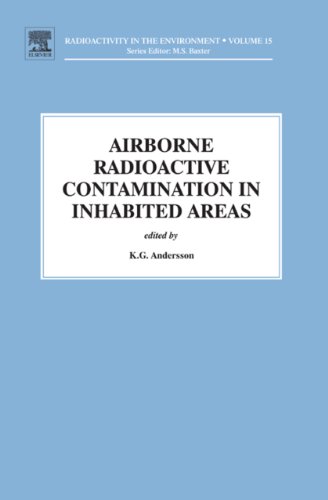By Eric Klinenberg
Heat waves within the usa kill extra humans in the course of a regular yr than all different normal failures mixed. earlier, nobody might clarify both the overpowering quantity or the heartbreaking demeanour of the deaths as a result of the 1995 Chicago warmth wave. Meteorologists and scientific scientists were not able to account for the dimensions of the trauma, and political officers have questioned over the resources of the city's vulnerability. In Heat Wave, Eric Klinenberg takes us contained in the anatomy of the city to behavior what he calls a "social autopsy," analyzing the social, political, and institutional organs of the town that made this city catastrophe lots worse than it should have been.
Starting with the query of why such a lot of humans died at domestic on my own, Klinenberg investigates why a few neighborhoods skilled larger mortality than others, how the town govt replied to the concern, and the way reporters, scientists, and public officers pronounced on and defined those occasions. via a mix of years of fieldwork, vast interviews, and archival examine, Klinenberg uncovers how a few mind-blowing and unsettling kinds of social breakdown—including the literal and social isolation of seniors, the institutional abandonment of bad neighborhoods, and the retrenchment of public tips programs—contributed to the excessive fatality charges. The human disaster, he argues, can't easily be blamed at the mess ups of any specific contributors or organisations. For whilst thousands of individuals die at the back of locked doorways and sealed home windows, out of touch with neighbors, family members, group teams, and public organisations, everyone seems to be implicated of their demise.
As Klinenberg demonstrates during this incisive and gripping account of the modern city , the widening cracks within the social foundations of yankee towns that the 1995 Chicago warmth wave made seen have under no circumstances subsided because the temperatures again to general. The forces that affected Chicago so disastrously stay in play in America's towns, and we forget about them at our peril.
For the second one version Klinenberg has additional a brand new Preface displaying how weather switch has made severe climate occasions in city facilities a big problem for towns and international locations throughout our planet, person who would require dedication to climate-proofing adjustments to infrastructure instead of simply reduction responses.
Read or Download Heat Wave: A Social Autopsy of Disaster in Chicago PDF
Best disaster relief books
Airborne Radioactive Contamination in Inhabited Areas (Radioactivity in the Environment)
For plenty of a long time, investigations of the behaviour and implications of radioactive infection within the atmosphere have involved in agricultural components and foodstuff creation. This used to be a result of inaccurate assumption that the implications of credible contaminating incidents will be limited to rural parts.
Hazards Analysis: Reducing the Impact of Disasters, Second Edition
The affects of traditional and man-made failures have elevated exponentially during the last few a long time. furthermore, with our international interconnectedness and the turning out to be scale of failures, latest catastrophic failures may have nearby, nationwide, or even international fiscal outcomes. Following within the culture of the profitable first variation, risks research: decreasing the impression of failures, moment version presents a constitution and technique for figuring out the character of average and human-caused failures.
Snow Goose Hunting Made Simple: 21 Steps to Snow Goose Hunting Success
LEARN:: find out how to effectively Hunt Snow ducks no matter if you don't have any Snow Goose looking ExperienceDo you need to hunt snow ducks yet are pissed off together with your loss of success? we've got all been there. we have now spent hundreds and hundreds of greenbacks on searching provides and hours using, constructing decoys yet then now not discovering any snow ducks or seeing ducks yet having none come inside of taking pictures variety.
The Private Sector's Role in Disasters: Leveraging the Private Sector in Emergency Management
This e-book examines the position of the personal region in emergency administration and the way that position is altering via inner most quarter intersections with govt, govt organisations, and the general public sectors in all levels of emergency administration. It fairly makes a speciality of the parts during which executive laws and instructions advertise or inspire deepest quarter involvement, and appears at top practices for public–private partnerships in addition to the various universal pitfalls of the contracting version.
- Internally Displaced People: A Global Survey
- Bangladesh Confronts Climate Change: Keeping Our Heads above Water (Anthem Climate Change and Policy Series)
- Critical Infrastructure: Homeland Security and Emergency Preparedness, Second Edition
- Crisis, Disaster and Risk: Institutional Response and Emergence: Institutional Response and Emergence
Additional info for Heat Wave: A Social Autopsy of Disaster in Chicago
Sample text
